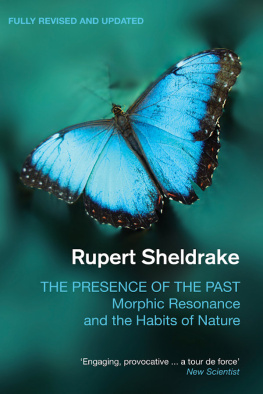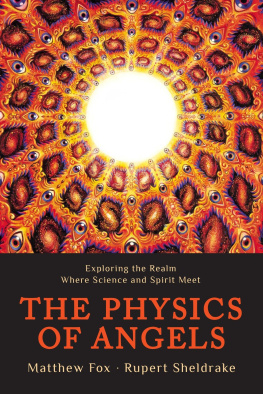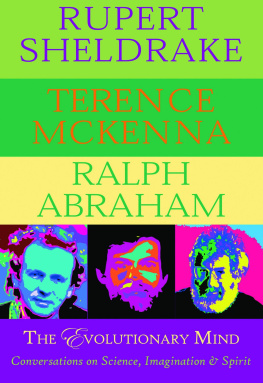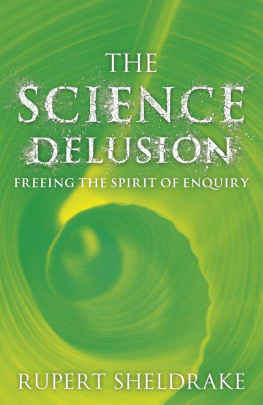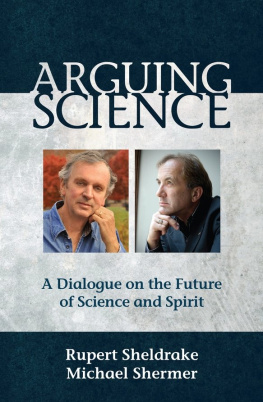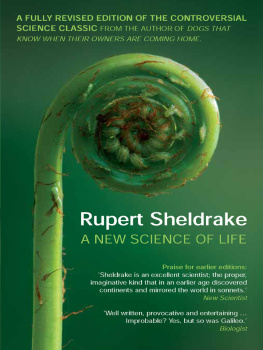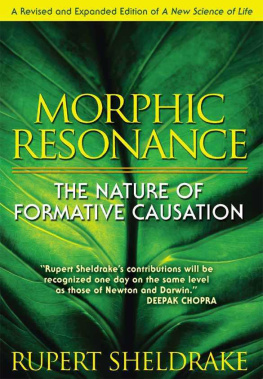Rupert Sheldrake - The Presence of the Past: Morphic Resonance and the Habits of Nature
Here you can read online Rupert Sheldrake - The Presence of the Past: Morphic Resonance and the Habits of Nature full text of the book (entire story) in english for free. Download pdf and epub, get meaning, cover and reviews about this ebook. year: 2011, publisher: Icon Books Ltd, genre: Religion. Description of the work, (preface) as well as reviews are available. Best literature library LitArk.com created for fans of good reading and offers a wide selection of genres:
Romance novel
Science fiction
Adventure
Detective
Science
History
Home and family
Prose
Art
Politics
Computer
Non-fiction
Religion
Business
Children
Humor
Choose a favorite category and find really read worthwhile books. Enjoy immersion in the world of imagination, feel the emotions of the characters or learn something new for yourself, make an fascinating discovery.
- Book:The Presence of the Past: Morphic Resonance and the Habits of Nature
- Author:
- Publisher:Icon Books Ltd
- Genre:
- Year:2011
- Rating:5 / 5
- Favourites:Add to favourites
- Your mark:
- 100
- 1
- 2
- 3
- 4
- 5
The Presence of the Past: Morphic Resonance and the Habits of Nature: summary, description and annotation
We offer to read an annotation, description, summary or preface (depends on what the author of the book "The Presence of the Past: Morphic Resonance and the Habits of Nature" wrote himself). If you haven't found the necessary information about the book — write in the comments, we will try to find it.
The Presence of the Past: Morphic Resonance and the Habits of Nature — read online for free the complete book (whole text) full work
Below is the text of the book, divided by pages. System saving the place of the last page read, allows you to conveniently read the book "The Presence of the Past: Morphic Resonance and the Habits of Nature" online for free, without having to search again every time where you left off. Put a bookmark, and you can go to the page where you finished reading at any time.
Font size:
Interval:
Bookmark:
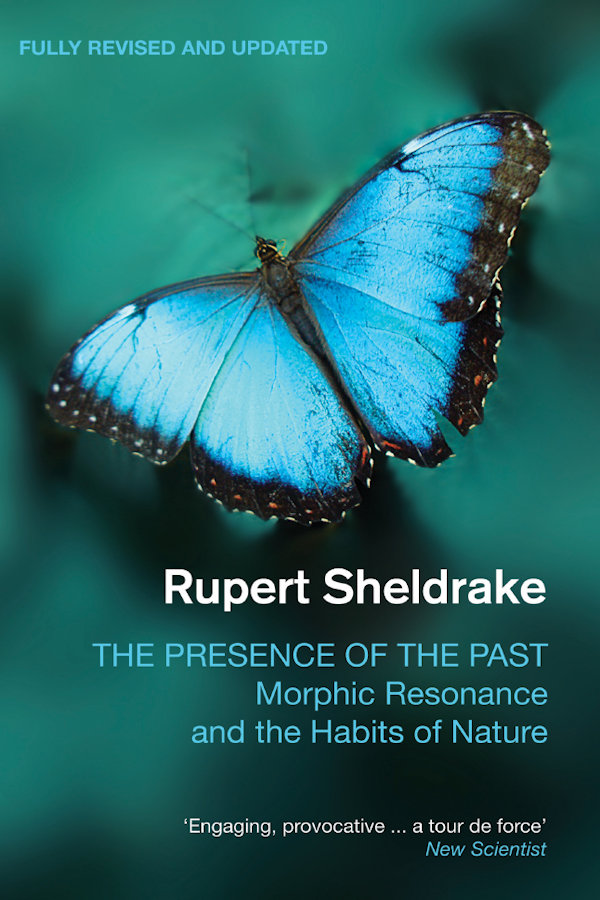
OTHER BOOKS BY RUPERT SHELDRAKE
A New Science of Life (1981, 2009)
The Rebirth of Nature (1990)
Seven Experiments That Could Change the World (1994)
Dogs That Know When Their Owners Are Coming Home (1999, 2011)
The Sense of Being Stared At (2003)
With Ralph Abraham and Terence McKenna
Chaos, Creativity and Cosmic Consciousness (2001)
The Evolutionary Mind (2005)
With Matthew Fox
Natural Grace (1996)
The Physics of Angels (1996)
About the Author
Dr Rupert Sheldrake is a biologist and author of more than 80 scientific papers and ten books, including the bestselling Dogs That Know When Their Owners Are Coming Home and A New Science of Life . He was a Fellow of Clare College, Cambridge and a Research Fellow of the Royal Society. He has written for various newspapers including the Guardian , where he had a regular monthly column, and for a variety of magazines, including New Scientist and the Spectator .
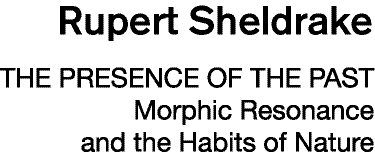
![]()
Published in the UK in 2011
by Icon Books Ltd, Omnibus Business Centre,
3941 North Road, London N7 9DP
email:
www.iconbooks.co.uk
First edition published in the UK in 1988 by Collins
This electronic edition published in the UK in 2011 by Icon Books Ltd
ISBN: 978-1-84831-313-2 (ePub format)
ISBN: 978-1-84831-314-9 (Adobe ebook format)
Printed edition (ISBN 978-184831-306-4)
sold in the UK, Europe, South Africa and Asia
by Faber & Faber Ltd, Bloomsbury House,
7477 Great Russell Street, London WC1B 3DA
or their agents
Printed edition distributed in the UK, Europe, South Africa and Asia
by TBS Ltd, TBS Distribution Centre, Colchester Road,
Frating Green, Colchester CO7 7DW
Printed edition published in Australia in 2011 by Allen & Unwin Pty Ltd,
PO Box 8500, 83 Alexander Street,
Crows Nest, NSW 2065
Text copyright 1988, 2011 Rupert Sheldrake
The author has asserted his moral rights.
No part of this book may be reproduced in any form, or by any means, without prior permission in writing from the publisher.
Typeset by Marie Doherty
To all my teachers, past and present
Contents
Preface
to the 2011 edition
This book argues that memory is inherent in nature. The so-called laws of nature are more like habits. Natures memory depends on a process called morphic resonance.
I first proposed this hypothesis in my book A New Science of Life: The Hypothesis of Formative Causation , published in 1981. In the new edition of A New Science of Life published in 2009, I discussed recent experimental evidence and new tests for morphic resonance.
In the first edition of this book, The Presence of the Past: Morphic Resonance and the Habits of Nature (1988), I developed this hypothesis further, and explored its implications for the understanding of heredity, memory, psychology, social behaviour, cultural inheritance and evolution, including cosmic evolution. This new edition is revised and updated in the light of discussions, criticisms, further thoughts, new evidence and ongoing developments in physics, cosmology, biology and consciousness studies. Changes in science since the 1980s have made this hypothesis more plausible, rather than less so.
When the hypothesis was first published, it was inevitably controversial. I was not surprised by disagreement, but I was surprised and relieved by the fact that even my most vociferous critics came up with no evidence against the hypothesis, nor pointed out any serious logical flaws. Instead, they dismissed this hypothesis as unnecessary . The unsolved scientific problems to which I drew attention were non-problems, or at least only temporary problems, and they would soon be solved by further research along established lines. Talking about morphic resonance was a waste of time, an unwelcome distraction from the serious business of science.
In the 1980s many scientists were confident that biologists were about to explain the nature of life in molecular terms, especially through the sequencing of genomes. Neuroscientists would soon understand the nature of minds through brain scanning and computer modelling. In the computer sciences, artificial intelligence would soon be created in machines that rivalled and even exceeded the intelligence of humans themselves. In physics, through the imminent development of an ultimate Theory of Everything, the origin of the universe and all material reality in it, including life and mind, would be explained in terms of mathematical formulae ideally in a single theory that will describe the whole universe, as Stephen Hawking put it in A Brief History of Time (1988). In his words, this theory would be the ultimate triumph of human reason for then we would know the mind of God.
In 1997, the American science writer John Horgan published a book entitled The End of Science: Facing the Limits of Knowledge in the Twilight of the Scientific Age . After talking to leading scientists in many areas of research, he concluded:
My guess is that this narrative that scientists have woven from their knowledge, this modern myth of creation, will be as viable a hundred or even a thousand years from now as it is today. Why? Because it is true. Moreover given how far science has already come, and given the physical, social and cognitive limits constraining further research, science is unlikely to make any significant additions to the knowledge it has already generated. There will be no great revelations in the future compared to those bestowed upon us by Darwin or Einstein or Watson and Crick.
Things look very different today. The proud promises of the human genome project have not been fulfilled, despite the immense technical achievement it represented. When the first draft was published in the year 2000, the first surprise was that it contained only about 23,000 genes, far fewer than the 100,000 expected. Sea urchins have more than us, around 26,000, and rice plants 38,000. Moreover, our genome differs very little from that of chimpanzees, and tells us almost nothing about our differences from apes. Billions of dollars were invested in genomics, but the commercial payoff has been minimal.
The predictive value of human genomes turns out to be very limited. Everyone knows that tall parents tend to have tall children, and just by measuring parents and children with tape measures, it is possible to explain about 80 to 90 per cent of the differences in childrens height in terms of their parents height. In other words, height is 80 to 90 per cent heritable. Recent studies on the genomes of 30,000 people identified about 50 genes associated with being tall or short. But shockingly these genes together accounted for only about 5 per cent of the inheritance of height!
Meanwhile, brain scanning and computer modelling have failed to explain the nature of minds, and in consciousness studies there is no agreed solution to the hard problem, the very existence of consciousness itself. Most predictions about the powers of artificial intelligence have turned out to be fantasies.
Physics too has run into seemingly intractable problems. Superstring and M-theories, with ten and eleven dimensions respectively, take science into completely new territory, and try to explain all reality in terms of vibrating strings billions of times smaller than electrons. It is not even clear what M-theory means. In The Grand Design (2010), Stephen Hawking confessed: No one seems to know what the M stands for. It may be master, miracle or mystery. People are still trying to decipher the nature of M-theory, but that may not be possible.
Font size:
Interval:
Bookmark:
Similar books «The Presence of the Past: Morphic Resonance and the Habits of Nature»
Look at similar books to The Presence of the Past: Morphic Resonance and the Habits of Nature. We have selected literature similar in name and meaning in the hope of providing readers with more options to find new, interesting, not yet read works.
Discussion, reviews of the book The Presence of the Past: Morphic Resonance and the Habits of Nature and just readers' own opinions. Leave your comments, write what you think about the work, its meaning or the main characters. Specify what exactly you liked and what you didn't like, and why you think so.

